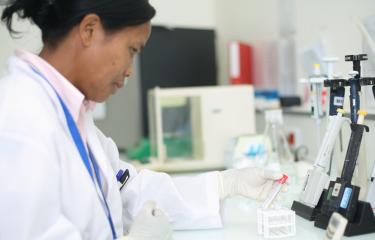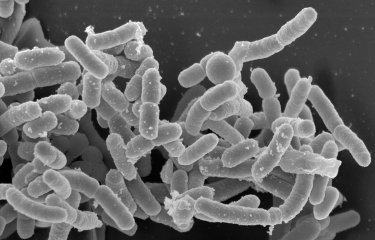Swiss-born Alexandre Yersin joined the Institut Pasteur in 1885 aged just 22 and worked under Émile Roux. He discovered the plague bacillus in Hong Kong. A brilliant scientist, he was also an explorer and pioneer in many fields. Alexandre Yersin was buried in Nha Trang (Vietnam) and next to his grave there is a small temple that is always decorated with flowers and incense – a great honor for a foreign national.
Alexandre Yersin was an eminent Pasteurian. Born in Switzerland, he studied medicine in Germany before emigrating to France, as Paris was then at the forefront of clinical medicine with great practitioners like Corvisart, Laennec and Trousseau. Introduced to the Institut Pasteur by Émile Roux, he is closely linked to the latter's discoveries (particularly regarding diphtheria). Alexandre Yersin worked at the brand new Institut Pasteur (opened on November 14, 1888) for two years before setting off for Yunnan in China in 1890. He never returned to Europe. After four years spent exploring the coast and hinterland of Annam, he was appointed by the French government to deal with the plague outbreak devastating Yunnan in China in 1894. Once in the country, and despite competition from the Japanese team, he discovered the agent responsible, Yersinia pestis, which he described as: “small stocky spindles with rounded ends". He then conducted a great many scientific experiments, in very diverse fields, until the end of his life. He was an idealist and said the following of medical practice: "I am very happy to treat those who come to me asking for advice, but I wouldn't like to make medicine my profession, what I mean is, I could never ask a patient to pay me for treatment. I consider medicine a calling, like priesthood."
 Biography of Alexandre Yersin
Biography of Alexandre Yersin

Portrait of Alexandre Yersin (1863-1943) aged 30 in 1893. Photographer - Author: Pierre Petit.
© Institut Pasteur - Musée Pasteur
- September 22, 1863
Born in Lavaux, in the Vaud canton of Switzerland. - 1885 - 1886
Yersin arrived in France where he continued his studies at Hôtel-Dieu de Paris hospital. There, he joined the Institut Pasteur and was involved in vaccination sessions. He discovered the diphtheria toxin with Émile Roux in 1886. - 1890 - 1894
He became a ship's doctor for the Messageries Maritimes shipping company. He led three expeditions across the Annam hinterland. - June 5, 1894
He was sent on a mission and reached Hong Kong. The plague had already caused 100,000 deaths in Canton that year. - June 20, 1894
He isolated the plague bacillus Yersinia pestis, which bears his name. - From 1894 onwards
He founded the Institut Pasteur in Nha Trang in 1895. He studied cattle breeding (to produce anti-plague serum) and growth of the Hevea brasiliensis, or the rubber tree. He acclimatized the cinchona tree, which enabled Indochina to meet its quinine needs during the Second World War. Alexandre Yersin was fascinated by everything – bacteriology, agronomy and astrology. He was the first person to own a car in Hanoi. - February 27, 1943
He died in Nha Trang, even though he had just started learning Greek and Latin again.






